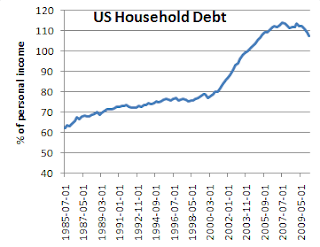The ongoing crisis in Ireland has hit many international bonds hard , The much accepted view of a weakening dollar certainly against the euro seems to have reversed in light of the pressures on the euro block. As a consequence many of the etfs in international bonds have seen drops as of late. For example here are 2 week changes for a few of the etfs. Ytd is in the chart below(pimb and emlc were established this year so the data is for less than ytd)
IGOV intl treasuries -3.6 (yellow in chat)
WIP int infl protected -3.9(green)
EMLC emerging local currency -4.4 (black)
PICB intl corp -5.1 (blue)
Interestingly the MUB muni bond etf was only -.3% for the same period
. A chart below shows performance for mub ns these international etfs ytd
 |
| Intl Bond Etfs (IGOV yellow,WIP green,emlc black, PICB blue,MUB red) |
For retail investors who went into this asset class chasing performance these moves will be a rude awakening and whatever yield pickup they were anticipating vs dollar bonds has evaporated in capital losses.
And the situation is likely to get worse. The Ireland bailout will likely be the last time bondholders get away without taking a hit through a restructuring which would mean some kind of reduction in principal similar to the Brady bonds in Latin America in the 1980s . The prospect of this is already seen in the large spreads of Greek, Spanish and Portugese sovereign bonds. But the implications go further banks across Europe including in economically stable hold large abouts of these bonds....and international bond funds and etfs hold large allocations of the bonds of these banks. So even a bond fund with few holdings of sovereign bonds or corporate bonds from the weaker countries in Europe could take a hit. This can already be seen in the drop in the international bond corporate.
It gets worse...from the perspective of a US dollar investor european bonds have lost much of their attractiveness as a currency play. The ongoing European crisis should pressue the Euro. A small fall in the currency wipes out all of the yield on etfs like international government (IGOV) which is only 2.44%.
As for emerging market bonds the prospect of higher inflation and an a desire to prevent a weakening of the currency is already leading to higher rates in some of these markets and higher rates mean lower bond prices. Added to that is currency risk and higher rates in the current environment dont necessarily mean stronger currencies. As a wsj article on inflation in the emerging markets notes
One conundrum for investors is how more aggressive tightening would play out in the currency markets. Most investors have been operating on the assumption that with the Fed keeping interest rates at zero for the foreseeable future, any moves by emerging-market countries to raise interest rates would attract even more money from yield-hungry investors.
This is an especially important question for investors who have been piling in to emerging-market bonds priced in local currencies. Many argue it's a no-lose situation, where even if bond prices fall because of inflation pressures, rising emerging-market currencies will still provide them a profit.
But since China tightened in October, the dollar has been on the upswing, albeit with help from concerns about the European debt crisis. In the current market environment, however, higher interest rates in China have been equated with risk aversion, and thus a stronger dollar. The U.S. dollar index is up roughly 4% since mid-October.
Traders say that until expectations for emerging-market rate increases become more widespread, they could continue to prompt safe-haven buying of U.S. dollars.
I wont be surprised to see this "hot" asset class see large outflows and it disappear from the new asset allocation models of many retail investors and advisors. In my view international exposure should be in equities only not fixed income, the currency and sovereign risks outweigh any benefit .
Certainly international bonds are not a replacement for dollar bonds in an asset allocation. The latter should be the stable part of a portfolio and therefore made up of high grade corporates and munis, govt agencies, and treasuries with relatively short duration (5 years at most) to reduce interest rate risk, High yield and convertibles if used should be considered part of the "risk allocation" along with equities and commodities not part of the bond allocation.
Many retail investors including those working with advisors who have used international bonds as part of their bond allocation may be encountering some surprises when looking at losses they though they fled equities to avoid. I wont be surprised to see large outflows in upcoming mutual fund data.





















